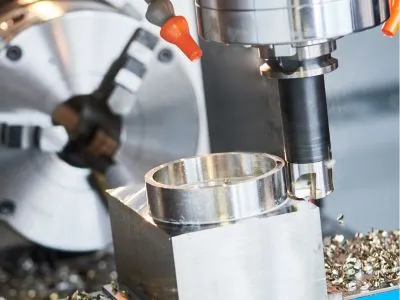CNC machining is a precise process that uses computer-controlled tools to cut and shape materials like metal, plastic, or wood into finished parts. It's known for its high accuracy, repeatability, and ability to produce complex shapes efficiently. This method is ideal for large-scale production where consistency and quality are key. On the other hand, prototyping involves creating early versions of a product to test design concepts before full-scale production. It allows for quick iterations, making it perfect for product development, especially when you're still refining your idea. Prototypes can be made from various materials and are often used to validate functionality and aesthetics. While CNC machining can also be used for prototyping, the two processes have distinct goals. Prototyping focuses on testing and innovation, while machining emphasizes efficiency and mass production. Choosing the right approach depends on your needs—whether you're looking for speed, cost-effectiveness, or precision. CNC prototyping is a powerful technique that leverages computer-controlled machines to create prototypes from solid blocks of material. This method helps identify design flaws early, saving time and resources down the line. It’s especially useful for one-off models or small batches, allowing manufacturers to test ideas without committing to full production. Some common operations used in CNC prototyping include drilling, milling, turning, and grinding. These techniques ensure that even complex designs can be tested accurately before moving forward with mass production. CNC machining is a broader term that refers to the use of computer-programmed machines to manufacture parts with high precision. Unlike prototyping, which is more about testing, machining is typically used for producing final products at scale. The process starts with a CAD (Computer-Aided Design) model, which is then converted into machine-readable code. The CNC system follows this code to perform cutting, shaping, and finishing tasks with minimal human intervention. Before full production, operators usually run a test to ensure everything works as intended. If you’re in the early stages of product development, prototyping is the way to go. It allows for flexibility, fast iteration, and risk reduction. However, if you need high-quality, consistent parts in large quantities, CNC machining is the better option. Each method has its own advantages. Prototyping is great for exploring design ideas, while machining excels in delivering accurate, repeatable results. Consider your project's volume, timeline, and budget when making a decision. At Cheetah Precision, we specialize in providing top-notch CNC machining and prototyping services. Our expertise includes 5-axis milling, vertical and horizontal CNC milling, lathe turning, and Swiss machining. Whether you need a single prototype or a full production run, we have the tools and experience to deliver excellent results. Don’t hesitate—reach out to us today for a free quote and let us help bring your vision to life. Iron Remove Device,Iron Ion Removal Filter,Industrial Water Filter Systems,Iron Ion Filter System Foshan Hongjun Water Treatment Equipment Co. Ltd , https://www.hjwastewatertreatment.com CNC machining and prototyping are both essential in modern manufacturing, but they serve different purposes. Understanding the distinction between them can help you make better decisions for your project.
CNC machining and prototyping are both essential in modern manufacturing, but they serve different purposes. Understanding the distinction between them can help you make better decisions for your project.What is CNC Prototyping?
What is CNC Machining?
Which One Should You Choose?
Cheetah Precision Can Help With Your Machining and Prototyping Needs
Prototyping vs Machining
Iron Remove Device,Iron Ion Removal Filter,Industrial Water Filter Systems,Iron Ion Filter System Foshan Hongjun Water Treatment Equipment Co. Ltd , https://www.hjwastewatertreatment.com